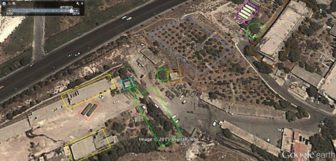
GIJN’s Guide to Fact-Checking Investigative Stories by Nils Hanson (2021)
GIJN’s Four Quick Ways to Verify Images on a Smartphone by Raymond Joseph. (2021)
Making Stories Ironclad & Bulletproof Line-by-Line, by Nils Hanson, former Investigative Editor for Swedish Television. An in-depth look at newsroom fact-checking and bulletproofing prior to publication or broadcast, presented at the Global Investigative Journalism Conference (2019).
AFP Fact Check Training, a 10-part video series that covers misinformation, verification, and geolocation (2021).
Verification and Digital Investigations Resources, a comprehensive list of resources presented by Craig Silverman of BuzzFeed at IJAsia18, which he updates and maintains.
The Verification Handbook covers many topics with the goal of being a “definitive guide to verifying digital content for emergency coverage.” Edited by Silverman and written by journalists from the BBC, Storyful, ABC, Digital First Media and elsewhere. Also see The Verification Guide for Investigative Journalists and Verification Handbook: Additional Materials. To download or buy them all, and see translated versions, click here.
Bellingcat’s Guide to Using Reverse Image Search for Investigations (2019).
Introduction to OSINT Video: A 2020 video from OSINT Curious.
Verifying Online Information This 2019 guide by Shaydanay Urbani, a writer and research reporter at First Draft, is described as “your little condensed guide to the wizardry of verification.” It includes “essential concepts, checklists and our favorite tips and techniques.” It uses “five pillars of verification:” provenance, source, date, location, and motivation.
Social News Gathering and Verification, by Ayla Mashkoor and Rachel Blundy from Storyful in Hong Kong.
Six Fake News Techniques and Simple Tools to Vet Them, by Olga Yurkova, Ukraine’s StopFake co-founder. She describes six fraud scenarios along with step-by-step instructions on vetting their accuracy or inaccuracy.
What to Watch for in the Coming Wave of “Deep Fake” Videos, by Samantha Sunne, looks at sophisticated videos that feature one person’s face plastered onto another’s body.
How to Spot Fake Images Anywhere on the Internet, by Henk van Ess, published in 2019 by Poynter. He also wrote 100 Tools and Tricks to Verify Instagram Posts.
9 Tools for Verifying Images by Molly Stellino of the International Journalists’ Network.
Satellite Images and Shadow Analysis: How The New York Times Verifies Eyewitness Videos
Six lessons from my deepfakes research at Stanford, by Tom Van de Weghe in 2019, addresses, “How should journalists address the growing problem of synthetic media.”
How The Wall Street Journal is preparing its journalists to detect deepfakes, a 2018 Nieman Labs article.
These New Tricks Can Outsmart Deepfake Videos—For Now, a 2018 Wired article by Sarah Scoles.
Deepfake-busting apps can spot even a single pixel out of place, an article on new techniques, a Technology Review article by Karen Hoa.
Calculating time using clues within a Google Streetview scene, 2019 article by an author calling himself “just a shadowy nerd” and going by the name Sector035.
How to Fact-Check Politics in Countries with No Press Freedom, by Daniel Funke.
How 90 Outlets Are Working Together to Fight Misinformation Ahead of Mexico’s Elections, b
Argentina’s Chequeado Becomes Global Leader in Fact-Checking, b
Fact-Checking and Verification, six packed pages from Raymond Joseph, a freelance journalist and trainer from South Africa who presented at the 2017 Global Investigative Journalism Conference (GIJC17). He is a former editor of the Big Issue South Africa, which he helped launch in 1996.
3 Quick Ways to Verify Images On a Smartphone. Don’t miss Joseph’s hugely popular guide to fact-checking what’s on your mobile phone. This is one of GIJN’s top ten resource pages.
How to Be a Digital Detective, another GIJC17 tipsheet from Joseph. It addresses how to spot fake news and provides examples for practical steps to take.
Bellingcat’s Digital Forensics Tools, a rich list of open-source verification and investigation tools and methods.
 Getting Started in Online Open-Source Investigations, by Eliot Higgins of Bellingcat, focuses on geolocation tools.
Getting Started in Online Open-Source Investigations, by Eliot Higgins of Bellingcat, focuses on geolocation tools.
Prepublication Quality and Control, by Nils Hanson, a GIJC17 tipsheet from the editor in chief of Mission Investigate (Uppdrag Granskning), the flagship investigative program at Swedish Public Television (SVT).
How to Monitor Social Media for Misinformation, by Nic Dias, a computational journalist and a senior research fellow for First Draft.
Advanced Guide to Verifying Video Content, by Aric Toler, Eastern Europe/Eurasia lead researcher and trainer at @bellingcat.
 The International Fact-Checking Network is based at the Poynter Institute. Publishes a weekly newsletter and created the fact-checkers’ Code of Principles.
The International Fact-Checking Network is based at the Poynter Institute. Publishes a weekly newsletter and created the fact-checkers’ Code of Principles.
How To Start Up a Fact-Checking Group, by
A Global Guide to Initiatives Tackling “Fake News,” a list of international fact-checking initiatives prepared by Fergus Bell, a multi-format journalist who runs Dig Deeper Media.
A Guide to Verifying Digital Content in Emergencies (2014) by Craig Silverman and Rina Tsubaki.
How Not to Be Wrong, by Winny de Jong, a freelance data journalist and trainer. “At the intersection of data and journalism,” she begins, “lots can go wrong.”
Four free online plagiarism checkers, an IJNet article, discusses Grammarly, NoPlag, Plagiarism Checker and CopyLeaks.
Get Your Facts Straight: The Basics of Fact-Checking, by Deepak Adhikari, editor of South Asia Check, is part of Tactical Tech’s Exposing the Invisible guide to citizen investigation.